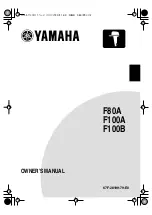
Intel Desktop Board DP43BFL Product Guide
20
SATA Interfaces
The ICH10 SATA controller provides five SATA ports and one eSATA port with a
theoretical maximum transfer rate of 3.0 Gb/s on each port. One device can be
installed on each port for a maximum of four SATA devices. A point-to-point interface
is used for host to device connections, unlike PATA which supports a master/slave
configuration and two devices on each channel.
For compatibility, the underlying SATA functionality is transparent to the operating
system. The SATA controller supports IDE and AHCI configuration and can operate in
both legacy and native modes. In Legacy mode, standard ATA I/O and IRQ resources
are assigned (IRQ 14 and 15). In Native mode, standard PCI bus resource steering is
used. Native mode is the preferred mode for configurations using the Windows* XP
and Windows Vista* operating systems.
NOTE
AHCI is only supported by the Microsoft Windows Vista and Microsoft Windows 7
operating systems.
Expandability
For system expansion, the Desktop Board provides the following expansion slots:
•
One PCI Express 2.0 x16 connector (compatible with PCI Express 1.1 add-in cards)
•
Two PCI Express 1.1 x1 connectors
•
Four PCI bus connectors
BIOS
The BIOS provides the Power-On Self-Test (POST), the BIOS Setup program, the
PCI/PCI Express auto-configuration utilities, and the video BIOS. The BIOS is stored in
the Serial Peripheral Interface (SPI) Flash device.
The BIOS can be updated by following the instructions in Chapter 3.
ATA Auto Configuration
If you install a Serial or Parallel ATA device in your computer, the auto-configuration
utility in the BIOS automatically detects and configures the device for your computer.
You do not need to run the BIOS Setup program after installing an ATA device. You
can override the auto-configuration options by specifying manual configuration in the
BIOS Setup program.
















































